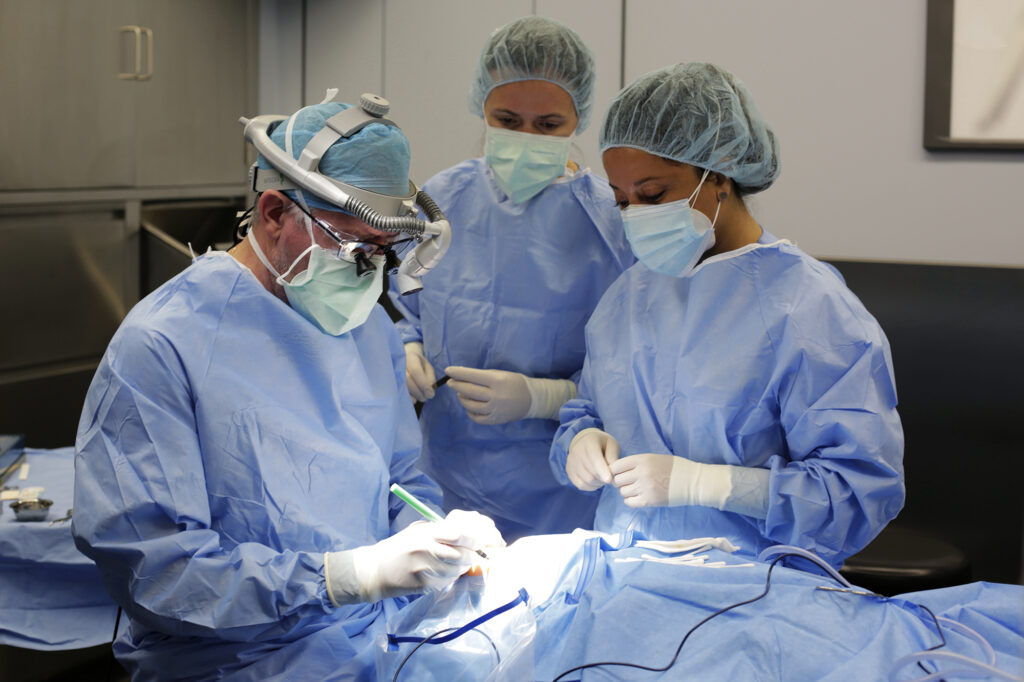Treatments
Enucleation of the eye

What is enucleation of the eye?
Enucleation of the eye is a surgical intervention that consists of removing the entire eyeball. The optic nerve and the muscles around the eye are also cut during this surgery, but they are not removed from the eye socket.
Our oculoplastic surgery specialists often use enucleation to alleviate very painful eye diseases or ophthalmological tumours that endanger the patient’s life as we as their eyesight.
The operation basically consists of completely removing the eyeball and inserting a spherical implant to prevent the eye socket from remaining empty. This implant is stitched to the six extraocular muscles to make the natural movement of the eye easier. A temporary prosthesis is placed over it to help heal the operated tissues and to act as support until the definitive prosthesis is fitted.
This is more radical surgery than ocular evisceration, in which some of the eye’s structures are preserved.
Problems treated with enucleation of the eye
As well as being recommended in cases of accidents or blows in which the eyeball is destroyed and rendered completely useless, as well as eye tumours such as uveal melanoma and retinoblastoma, this surgery is used to:
- Improve the appearance of blind and/or disfigured eyes in which enucleation is required before an eye prosthesis can be fitted to give the face a more natural appearance.
- Inflammatory diseases and processes which are also painful. This is the case of iridocyclitis (inflammation of the iris and of the ciliary body, two structures located in the anterior segment of the eye), ocular tuberculosis (an infection that can affect different parts of the eye), early-onset panophthalmitis (generally infectious inflammation that affects the entire eye) or severe glaucoma.
Recovery
Enucleation of the eye is a surgery that takes place in outpatients. In other words, you can return home after leaving the operating theatre and after a few hours in observation. Over the first few days you might notice discomfort such as swollen eyelids, tears (sometimes with drops of blood), pain when you move your eyes, or even a headache, all of which will subside within one week. To avoid post-operative complications, you must follow a treatment with antibiotic and anti-inflammatory drops. You should also have a couple of weeks of relative rest.
After a month, we will check the healing process and weigh up the time to fit the final external prosthesis. This is designed especially for each patient and has the same appearance as a healthy eye, thus reducing the aesthetic impact it might have on your face. The surgical and aesthetic results after enucleation of the eye have improved greatly over recent years. So much so that, once the definitive prosthesis has been implanted, it is really difficult to tell a healthy eye from an enucleated eye. The surgery is also a significant change for recovering your health and quality of life.